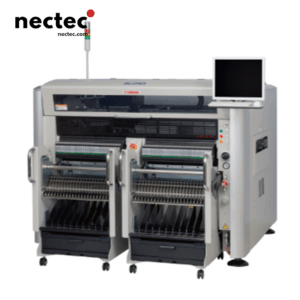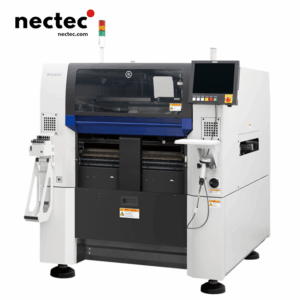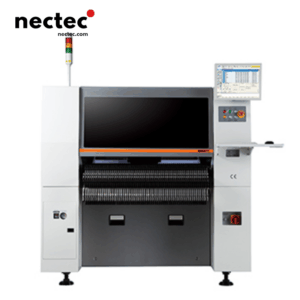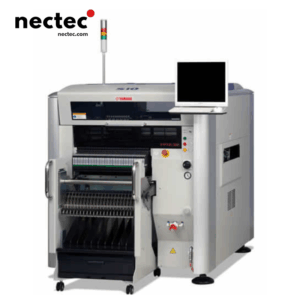In recent years, China’s manufacturing landscape has experienced a significant transformation, primarily driven by advancements in automation technology. One of the most impactful innovations in this domain is the pick and place machine, which has emerged as a cornerstone of modern manufacturing practices. In this article, we will explore the evolution of pick and place machines in China, their operational mechanics, the benefits they offer to manufacturers, and the future of automation in the industry.
Inzicht in pick-and-place-machines
Pick and place machines are automated systems that are designed to grab an item from one location (the “pick” phase) and move it to another location (the “place” phase). These machines are essential in various sectors, most notably in electronics manufacturing for assembling printed circuit boards (PCBs). Equipped with precision robotic arms, advanced sensors, and sophisticated software, modern pick and place machines offer remarkable speed and accuracy, which are crucial for meeting the high demands of production schedules.
De evolutie van de productie in China
China, often referred to as the “world’s factory,” has long been the hub for mass production. However, with rising labor costs and an increasing demand for high-quality products, Chinese manufacturers have been forced to rethink their approaches. The shift towards automation, incorporating pick and place machines, has emerged as a strategic response to these challenges. Historically, labor-intensive manufacturing was the norm, but the integration of automated machinery marks a new era—one defined by precision, efficiency, and scalability.
Voordelen van pick-and-place-machines
1. Verbeterde efficiëntie
One of the primary advantages of implementing pick and place machines is the drastic improvement in operational efficiency. Traditional manual assembly lines are often plagued by downtime, inconsistent performance, and human error, leading to production delays and higher costs. In contrast, automated systems can operate continuously without the need for breaks, yielding significantly higher output levels.
2. Verhoogde precisie
In industries where accuracy is paramount, such as electronics, the precision offered by pick and place machines is invaluable. These machines meticulously position components with pinpoint accuracy, reducing the likelihood of defects and enhancing the overall quality of the final product. This capability not only minimizes waste but also strengthens the brand’s reputation in the market.
3. Flexibiliteit en aanpassingsvermogen
Modern pick and place machines are designed with adaptability in mind. They can be easily reprogrammed to accommodate new products or assembly processes. This flexibility allows manufacturers to respond quickly to changing market demands, a vital advantage in today’s fast-paced business environment. As consumers increasingly seek customization, the ability to pivot production lines quickly sets forward-thinking companies apart.
4. Kosteneffectiviteit
While the initial investment in pick and place technology may be substantial, the long-term cost benefits are undeniable. By reducing labor costs, minimizing waste, and enhancing productivity, manufacturers can achieve a favorable return on investment. Over time, the savings realized through automation can far exceed the costs associated with manual labor and inefficiencies.
China’s Leading Pick and Place Machine Manufacturers
The demand for pick and place machines has spurred the growth of a number of reputable manufacturers in China. These companies are at the forefront of innovation, developing sophisticated systems that cater to various industries. Some of the leading manufacturers include:
1. JUKI Corporation
JUKI is known for its high-quality pick and place machines, offering solutions that cater to both small-scale and large-scale production needs. Their machines are celebrated for their precision and reliability, making them a popular choice among electronics manufacturers.
2. Yamaha Motor Co.
Yamaha’s pick and place machines combine speed with flexibility. They are designed to handle a diverse range of components, making them ideal for manufacturers that produce a variety of products. Their commitment to innovation has positioned them as leaders in the automation sector.
3. ASM assemblagesystemen
ASM is recognized for integrating advanced technology into their pick and place machines. Their systems are equipped with intelligent software that optimizes the pick-and-place process, ensuring maximum efficiency and accuracy. This makes them a go-to choice for companies seeking state-of-the-art solutions.
Toekomstige trends in pick-and-place-technologie
The landscape of pick and place technology is continually evolving. As manufacturers seek to further refine their production processes, several emerging trends are shaping the future of this technology:
1. Integratie van kunstmatige intelligentie
Artificial intelligence (AI) is poised to revolutionize automation in manufacturing. With the integration of AI, pick and place machines can learn from their operational patterns, making them more efficient and capable of adapting to new scenarios. This could lead to even faster processing times and reduced errors, transforming production lines.
2. Verbeterde samenwerking met menselijke werkers
The future will likely see increased collaboration between human workers and automated systems. Collaborative robots, or cobots, can work alongside humans, performing repetitive tasks while allowing workers to focus on more complex activities. This synergy results in a more harmonious and productive workplace.
3. IoT-connectiviteit
As the Internet of Things (IoT) continues to grow, the integration of connected devices into manufacturing processes is becoming more prevalent. IoT-enabled pick and place machines can communicate with other equipment, providing real-time data and insights that enhance decision-making and operational efficiency.
Uitdagingen en overwegingen
While the advantages of pick and place machines are clear, several challenges remain. The initial costs associated with purchasing and implementing these systems can be a deterrent for some manufacturers. Additionally, there is a need for skilled personnel who can operate and maintain these advanced machines effectively. Overcoming these challenges will be essential for organizations looking to thrive in an increasingly automated world.



















